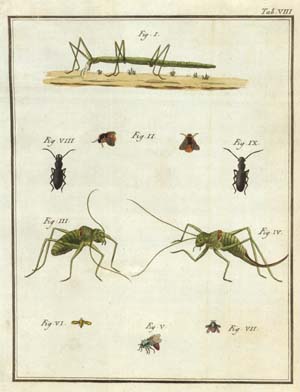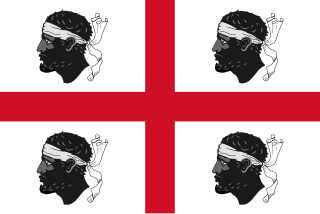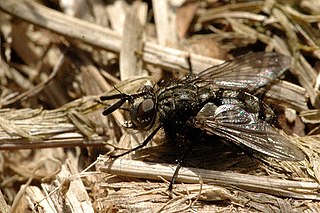
Sardinian or Sard is a Romance language spoken by the Sardinians on the Western Mediterranean island of Sardinia.
Zenaga is a Berber language on the verge of extinction currently spoken in Mauritania and northern Senegal by a few hundred people. Zenaga Berber is spoken as a mother tongue from the town of Mederdra in southwestern Mauritania to the Atlantic coast and in northern Senegal. The language is recognized by the Mauritanian government.

Earwigs make up the insect order Dermaptera. With about 2,000 species in 12 families, they are one of the smaller insect orders. Earwigs have characteristic cerci, a pair of forcep-like pincers on their abdomen, and membranous wings folded underneath short, rarely used forewings, hence the scientific order name, "skin wings". Some groups are tiny parasites on mammals and lack the typical pincers. Earwigs are found on all continents except Antarctica.

Forficula auricularia is a species complex comprising the common earwig or European earwig, an omnivorous insect in the family Forficulidae. The European earwig survives in a variety of environments and is a common household insect in North America. The name earwig comes from the appearance of the hindwings, which are unique and distinctive among insects, and resemble a human ear when unfolded; the species name of the common earwig, auricularia, is a specific reference to this feature. They are considered a household pest because of their tendency to invade crevices in homes and consume pantry foods, and may act either as a pest or as a beneficial species depending on the circumstances.

Pietro Rossi was an Italian scientist and entomologist.

The University of Technology of Troyes is a French university, in the academy of Reims. The UTT is part of the network of the three universities of technology, found by the University of Technology of Compiègne. Inspired by the American University of Pennsylvania in Philadelphia, these three universities are a French mixture between the universities of this country and its schools of engineers .UTT is ranked in the top 10 engineering schools 2017 in France by Usine Nouvelle.

Annales de chimie et de physique is a scientific journal founded in Paris, France, in 1789 under the title Annales de chimie. One of the early editors was the French chemist Antoine Lavoisier. Lavoisier, an aristocrat, was guillotined in May 1794, ostensibly for tax fraud: and the journal was not published from 1794 to 1796 while the Reign of Terror was at its height under the French Directory.

The Kingdom of Sardinia, also referred to as the Kingdom ofSardinia-Piedmont or Piedmont-Sardinia as a composite state during the Savoyard period, was a country in Southern Europe from the late 13th until the mid-19th century.

Forficula is a genus of earwigs in the family Forficulidae. The best known species is Forficula auricularia.

Jules René Bourguignat was a French malacologist, a scientist who studied mollusks. He served as secretary-general of the Société malacologique de France. He traveled widely, visiting, for example, Lake Tanganyika and North Africa. He reportedly defined 112 new genera and around 2540 new species of mollusks.

The Sardinians, or Sards, are a Romance language-speaking ethnic group native to Sardinia, from which the western Mediterranean island and autonomous region of Italy derives its name.

Triarthria setipennis is a species of tachinid fly which parasitizes other insects, including earwigs.

Duvalius is a genus of beetles in the family Carabidae. They are distributed from the Mediterranean area to northwestern China. They typically live in caves and in shallow subterranean spaces. Many species are rare and have very restricted distributions.

Barbitistes obtusus, the southern saw-tailed bush-cricket or Alpine saw bush-cricket, is a species of bush crickets in the subfamily Phaneropterinae.
Troglohyphantes vignai is a species of cave spider of the family Linyphiidae. It is endemic to Italy.

Calephorus compressicornis is a species of grasshopper in the tribe Calephorini found in Europe and Africa.

Trechini is a large tribe of ground beetles in the family Carabidae. There are more than 270 genera and over 2,400 described species in Trechini, found throughout the world.
Gomphoceridius is a monotypic genus of grasshoppers containing the species Gomphoceridius brevipennis and placed in the subfamily Gomphocerinae, tribe Gomphocerini.

Chelidurella is a genus of European earwigs, in the family Forficulidae and subfamily Anechurinae, erected by Karl Wilhelm Verhoeff in 1902. The recorded distribution of species is mostly in northern Europe including Britain. The genus name was recently restored by Kirstová et al., who provide a key for identification of males.
















